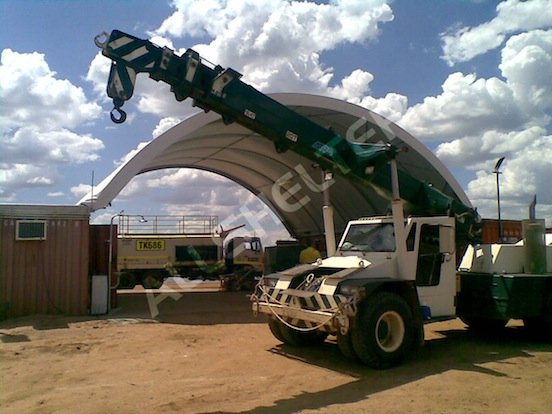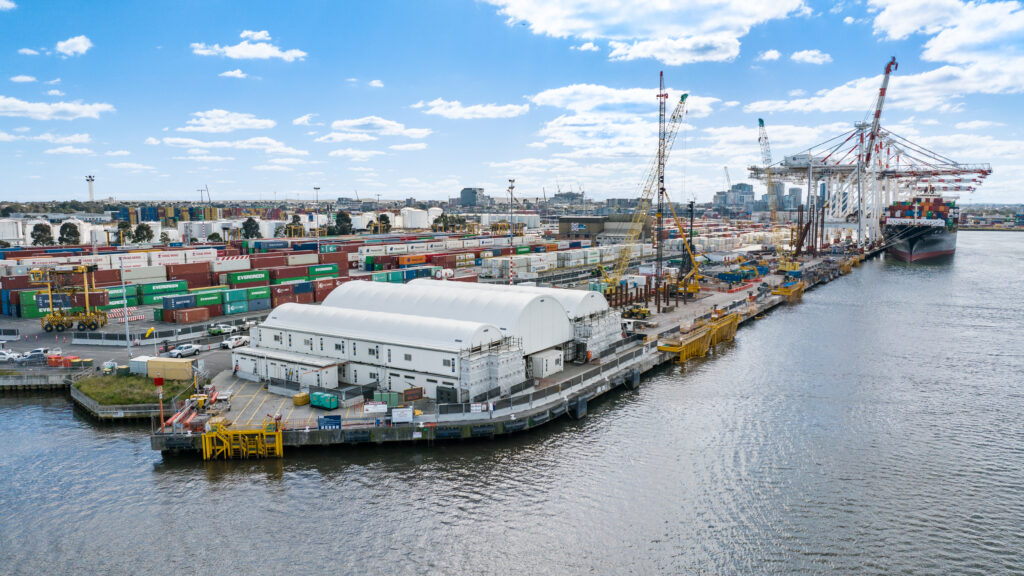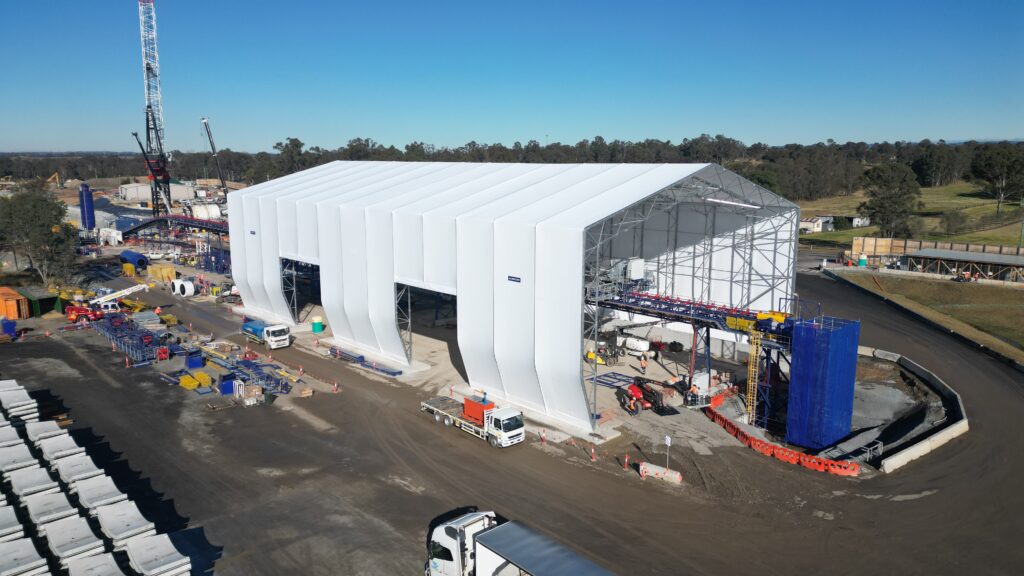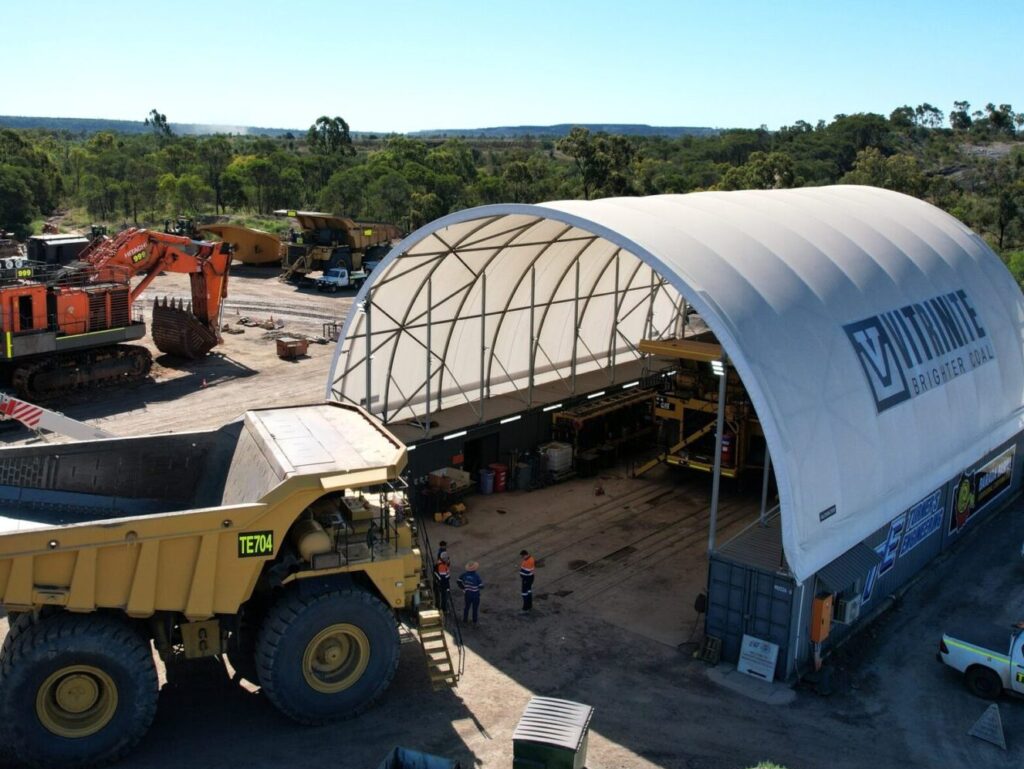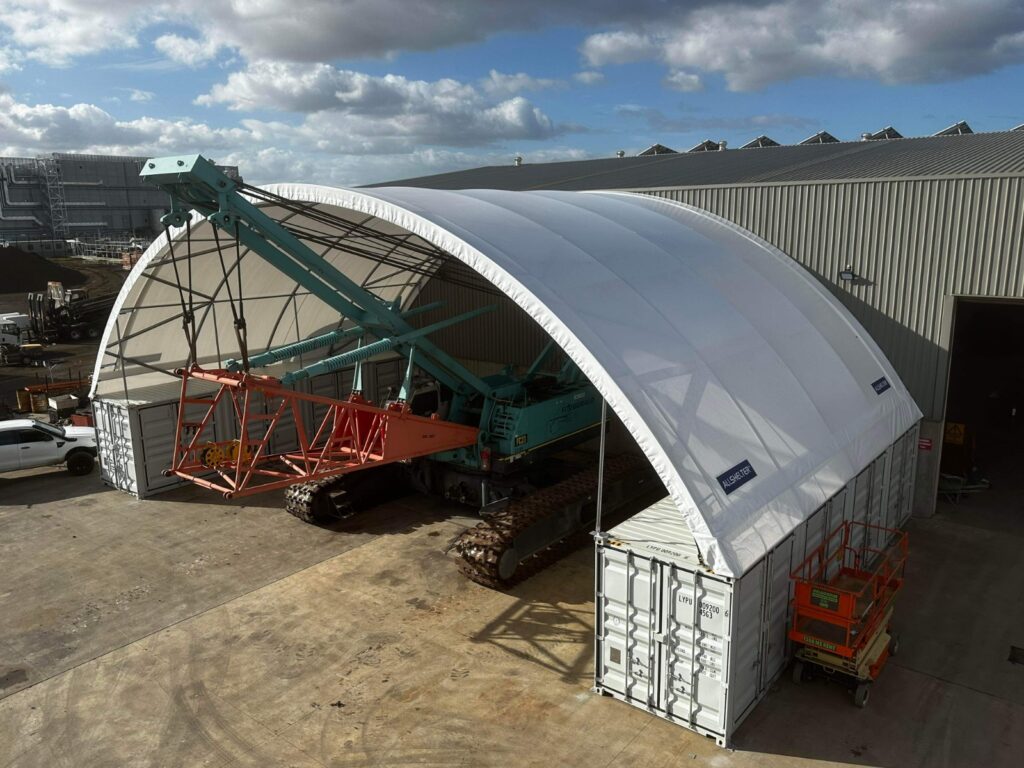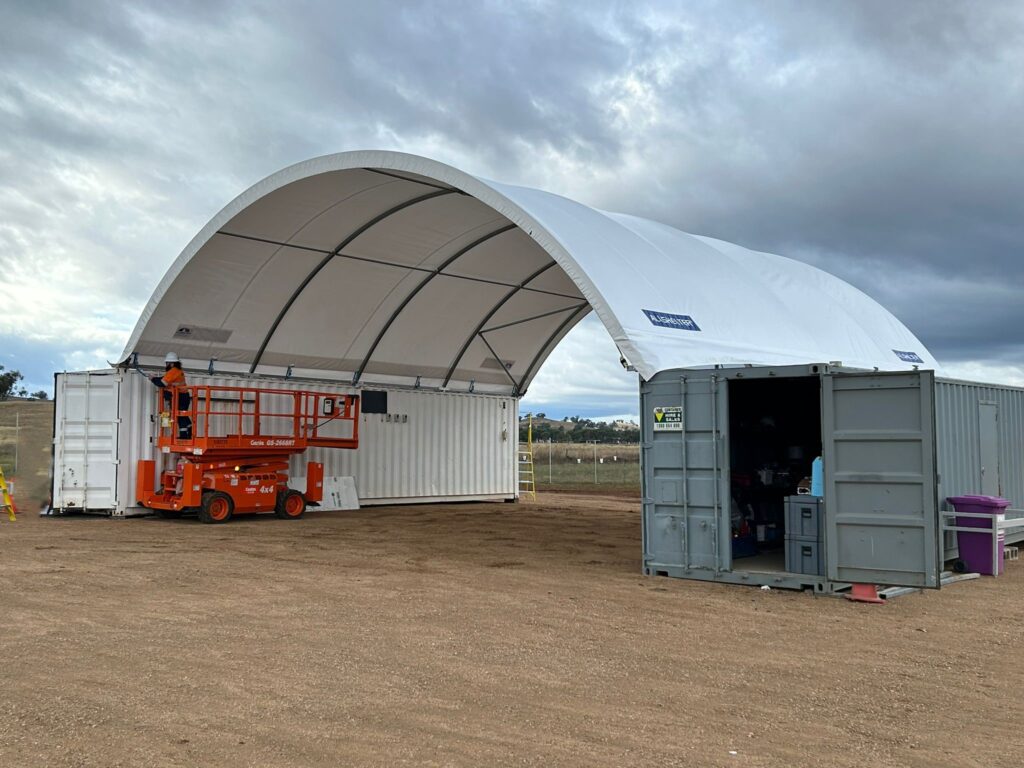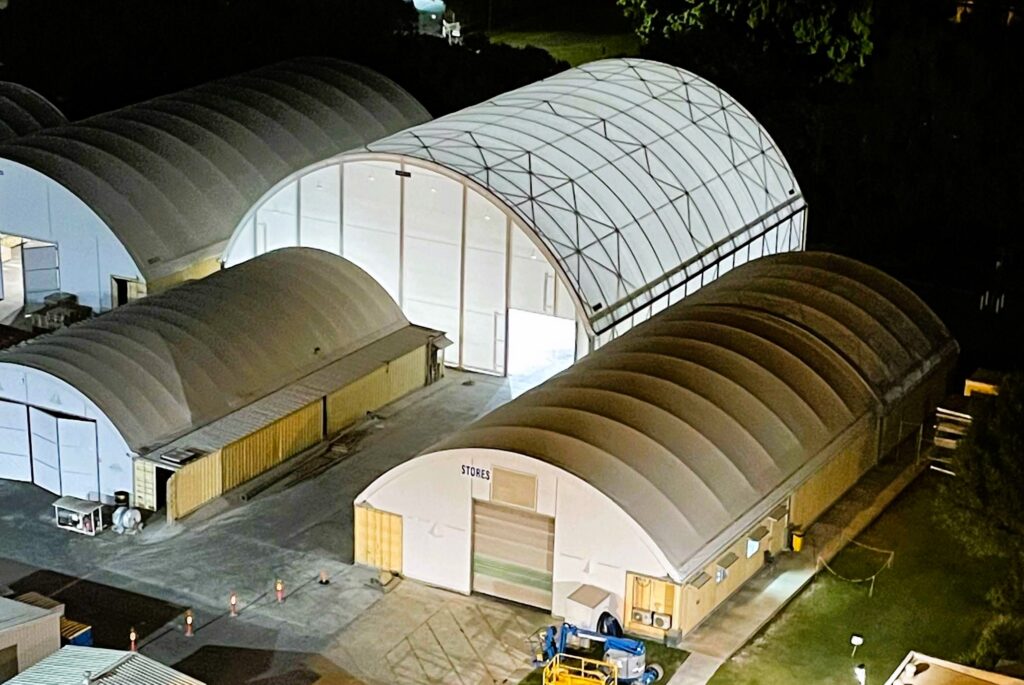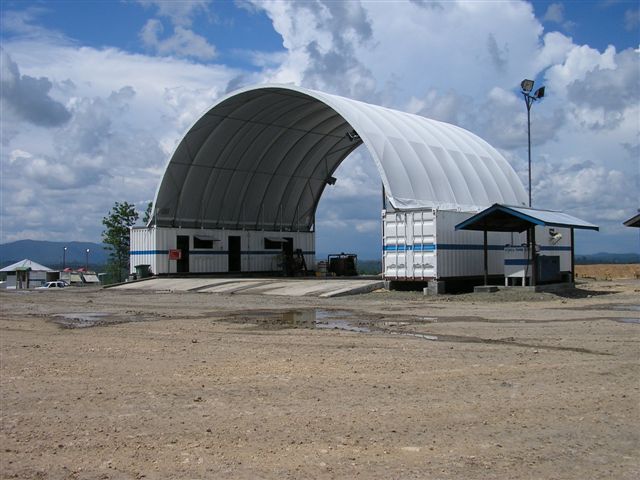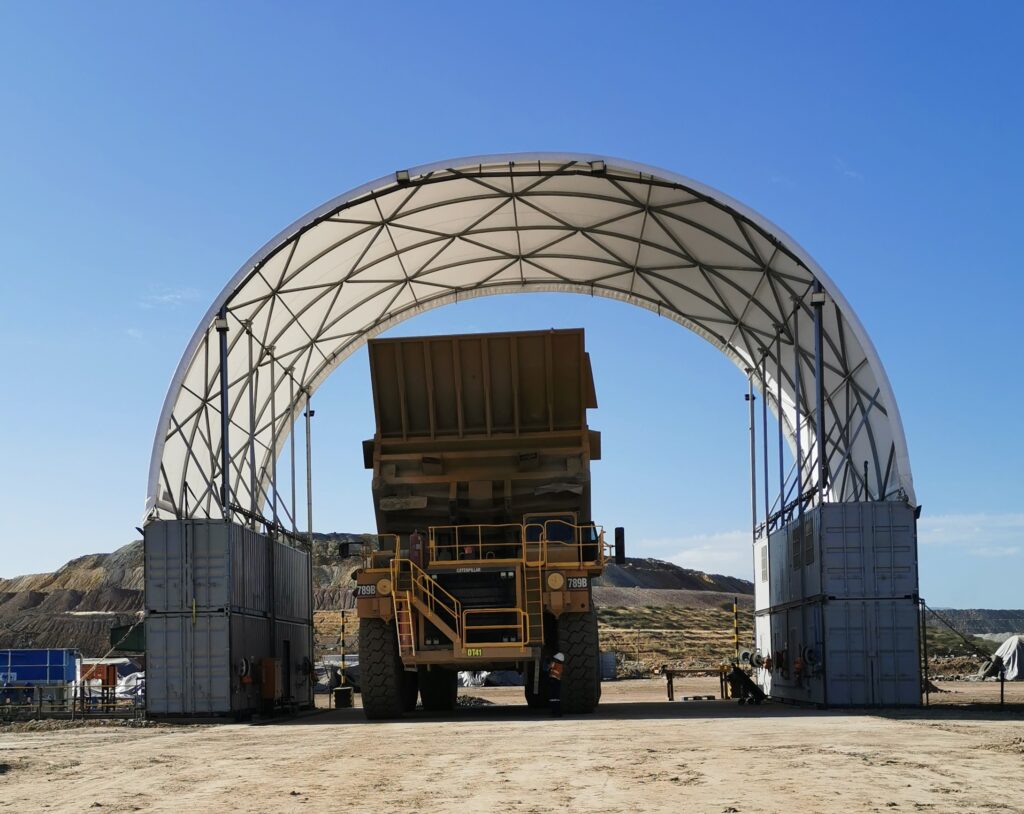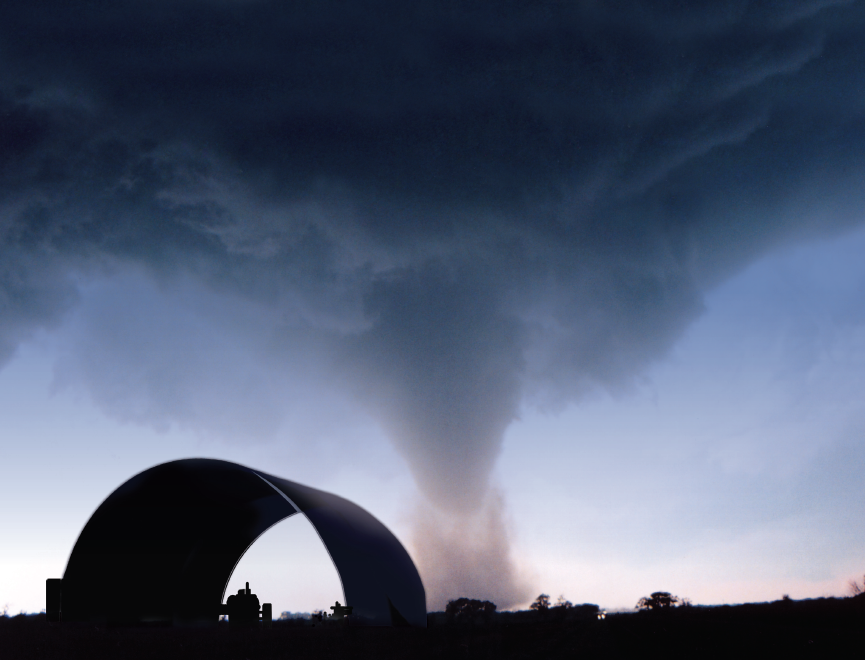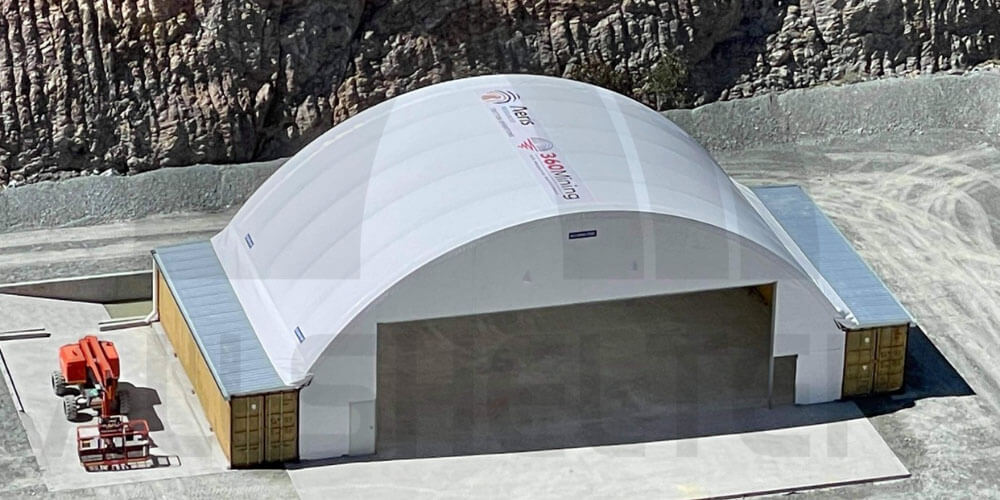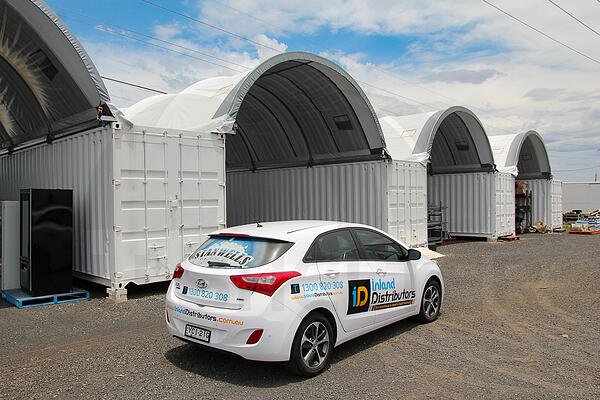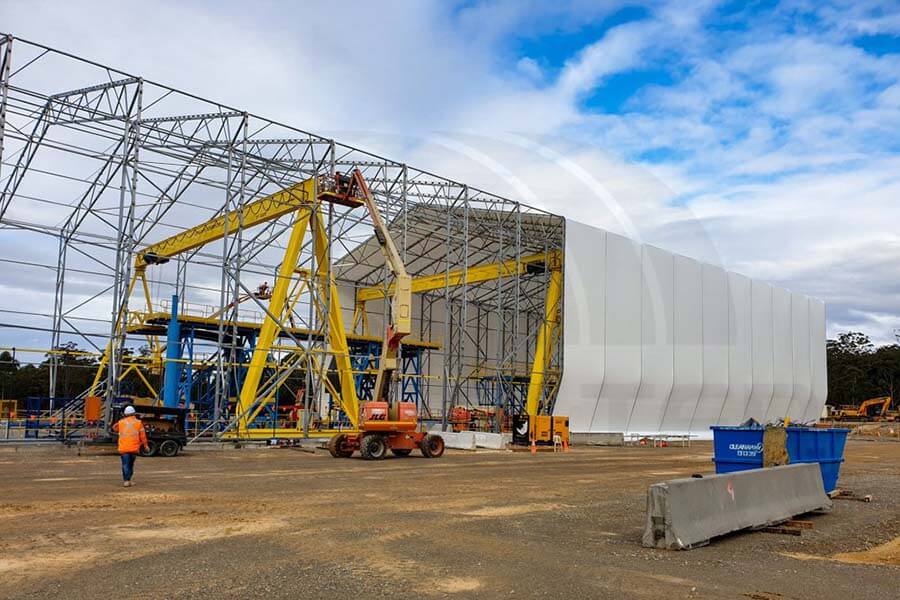When it comes to weather protection for personnel, stock, machinery or equipment, there’s a lot to be said for the effectiveness of quality, fully engineered steel-frame fabric shelters. But even apart from that, one of the main advantages of these types of shelters would have to be their flexibility and adaptability to such a broad range of work situations and locations.
Wide variety of shelter types
Not all work situations or projects lend themselves to a permanent shelter solution, such as a bricks-and-mortar construction. A project site for instance may require temporary shelters for staff, equipment and assets – ones that can be dismantled or moved afterwards, or updated later on if required – without the delays that often come with waiting on planning permission and building permits.
Different project sites also have widely differing needs, which is why at Allshelter we provide such a wide range of shelter options – from container shelters of various heights and widths, and mining and industrial shelters, to relocatable and towable shelters that can be easily moved, and post-mounted shelters for walkways. Our container shelters for example can be up to 30m wide and 14m tall, depending on the particular needs of the work site.
There are fabric shelter solutions to suit mining and construction projects as well as aviation requirements, maintenance workshops, warehousing and accommodation areas. All our shelters use semi-translucent high-strength woven polyethylene fabrics for covers, and come with non-corrosive galvanised steel frames and commercial-grade bolts and fittings. They also come in kit form and are easy to put together and dismantle when required.
Shelters for a variety of regions
It’s also important of course that the shelter is suitable for the region in which it is located in terms of climate and terrain, providing protection for workers and equipment from heat, UV-rays, cold, rain, hail, lightning, dirt, dust and strong winds. Steel-frame fabric shelters are also highly adaptable in this respect, providing protection for just about any climate or terrain in Australia.
- Winter – fabric shelters can provide protection from the elements in colder weather, even snow if the project is situated in an alpine region. Just as with heat, cold and wet weather can also slow down production. A suitable shelter can provide a dry, comfortable and naturally lit working environment, and also protection for equipment and assets.
- Winds – wind can be one of those unpredictable elements that can cause major disruption to work projects, which makes it important to have shelters that will remain intact when winds occur. Allshelter’s shelters are wind-rated up to 288km/h with their covers in place, making them suitable even for cyclone-prone regions where required.
- Summer – during hot seasons, exposure to heat and sun can lead to sunburn, heat-stress and dehydration of workers, and severely hamper productivity. UV-stabilised fabric shelters have been shown to provide an under-cover environment that is up to 30% cooler than outdoors.
A choice of accessories, foundations and purchasing options
Fabric shelter accessories such as full or partial endwalls and / or doorway systems can be used to provide weatherproofing for extra protection from rain, wind and dust, giving your workers, vehicles or equipment total cover from the elements. Other accessories include bolt-on or twistlock beams, gutter systems, extended flaps, lighting, and fire-retardant fabric.
Options for foundations include concrete piers, ballast, concrete slab or footings, and external ballast anchors, depending on what you need on your project site in terms of anchoring and permanence.
With Allshelter, you also have the flexible option to buy or rent your shelters, depending on your requirements. To discuss your particular project requirements, feel free to contact one of the team members at Allshelter.
